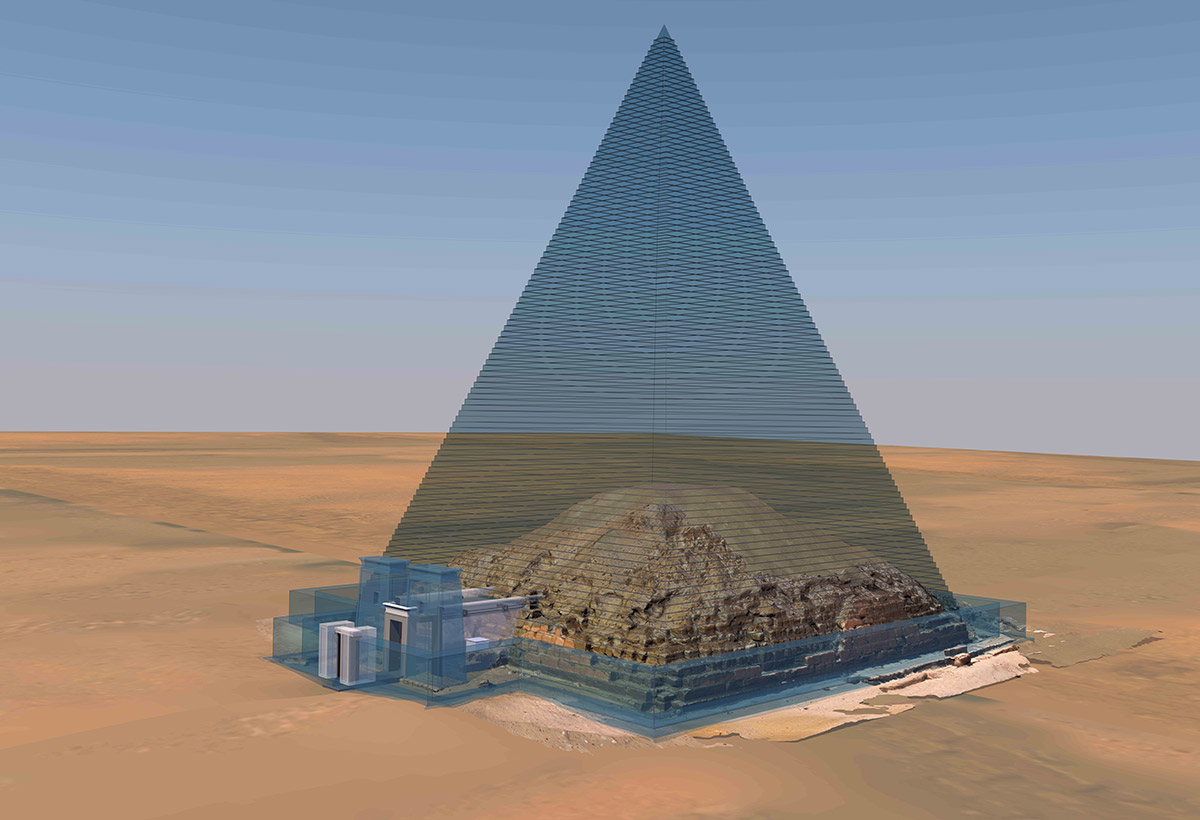El-Kurru: The Pyramid

The largest pyramid at El-Kurru, known as Kurru 1 or simply Ku. 1, was built around 325 BCE in the center of the already ancient cemetery. Originally standing about 35 meters (115 feet) high, it was a quarter as tall as the Great Pyramid at Giza. It was also narrower and had a steeper slope (70–75 degrees compared to the 51.5-degree slope of the Great Pyramid). Several courses of roughly quarried sandstone blocks formed the main structure, which was finished with an outer shell of smooth sandstone blocks. The interior was filled with stone rubble.
A small chapel was attached to the east side of the pyramid, facing the Nile. Beneath this, three underground chambers were accessed by a long staircase cut into the bedrock. Excavation of these chambers in 2015 revealed them to be empty and unfinished. For reasons that are unclear, the pyramid was never used for a royal burial.
During the medieval period, stones were taken from all the El-Kurru pyramids and used to build a wall around the local town. As stones were removed from Ku. 1, its rubble core spilled out and covered the remaining blocks. The graffiti that pilgrims had carved on these blocks remained hidden until 2015 when the University of Michigan Expedition cleared away the rubble and discovered them.

